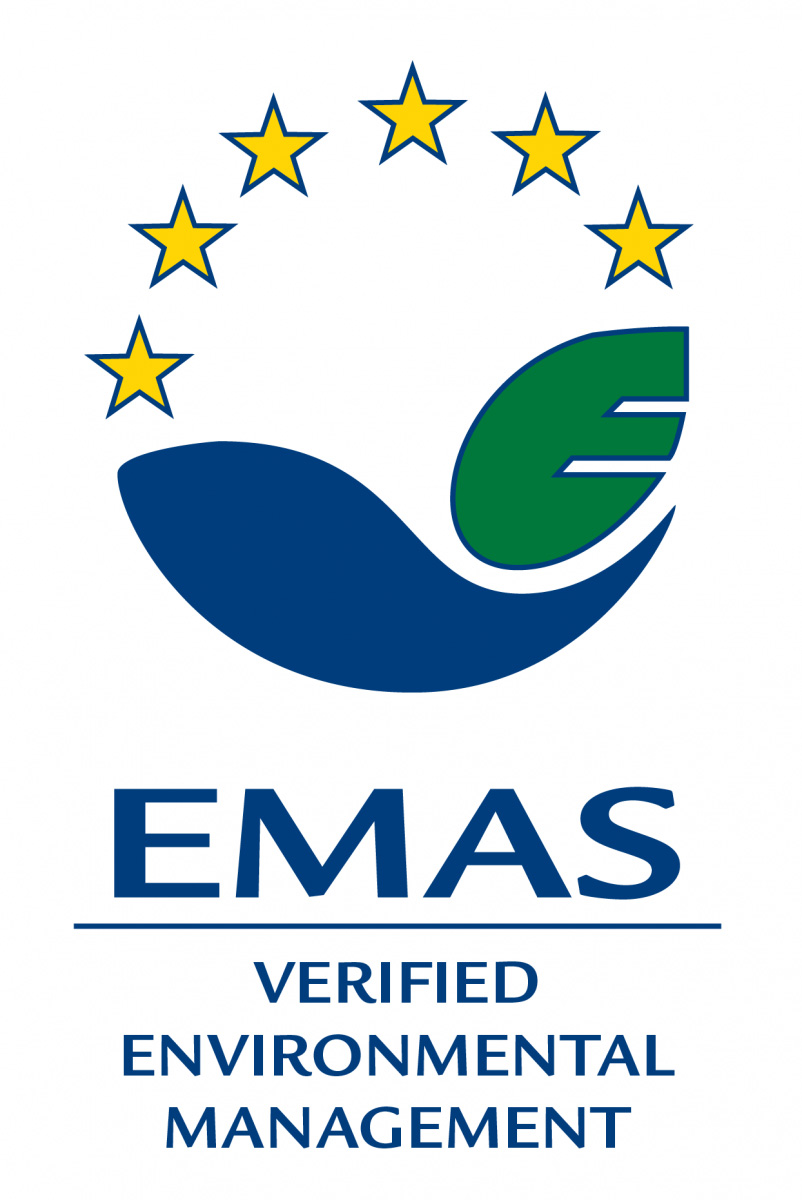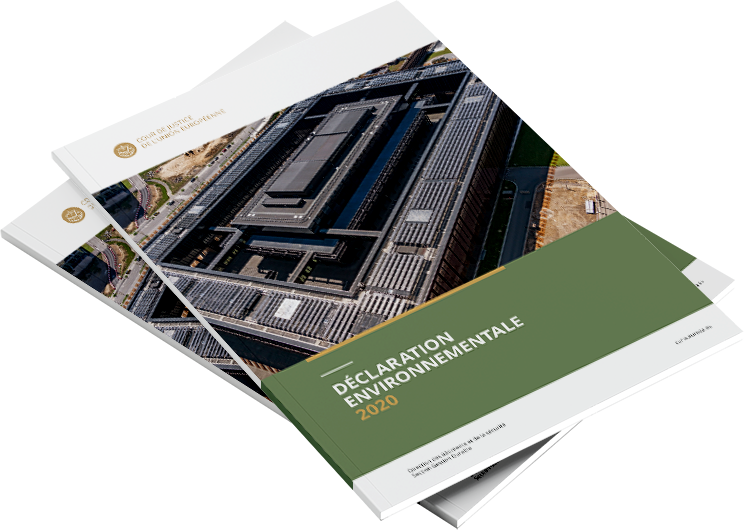
The Court of Justice of the European Union has for several years been pursuing an ambitious environmental policy, designed to meet the highest standards of sustainable development and environmental conservation.
As in every year, the Institution gives an account of developments in the most recent indicators at its disposal, namely those for 2019. 2020 will be a peculiar year in view of the incidence of generalised remote working on the Institution’s environmental impact. This will be outlined in the Year in Review for 2021.
Underpinning the management of the Institution’s building projects, and the day-to-day management of the resources and tools at its disposal, is the constant commitment to respecting the environment, as shown by the Court’s EMAS (Eco-Management and Audit Scheme) registration since 2016.
The EMAS registration, established by an EU regulation and granted to organisations that satisfy strict conditions relating to their environmental policies and their efforts in relation to the protection of the environment and sustainable development, is therefore a clear recognition of the Court’s ecological commitment and of the high environmental performance achieved.
In its annual environmental statement, the Court presented a detailed account of its environmental performance and of current and future ecological projects within the Institution.
By means of an online training module, the Court informs all new arrivals of the environmental aspects associated with their daily work, proposing good habits to adopt in connection with information and office technology, energy use, water and waste processing, and also in their own personal transport choices.
Among the specific initiatives adopted, the Court set itself the objective of completely eliminating single-use plastic bottles from courtrooms, deliberation rooms and meeting rooms over the course of the year: since November 2020, it has stopped ordering them.


- Collection of soft plastic bottle tops
- Reduction in the use of single-use plastic
- Increase in the number of bicycle racks
- Participation in European Mobility Week: ‘Lunchtime conference’ on ‘Sustainable Mobility’ (via videoconference)
- Collection of organic waste for the production of biogas
- Reduction in office and catering waste: -8.6% /FTE (in 2019). Full Time Equivalent (FTE) is a unit of measurement of occupational activity independent of the disparities in the number of hours worked each week by staff members resulting from their different working arrangements.
- Reduction in water consumption: -5.5% / m3/FTE (en 2019)
- Reduction in paper consumption: -17.6% kg/FTE (in 2019)
- Reduction in electricity consumption: -10.6% kWh/FTE (in 2019)
- 2 958 m2 of solar panels, producing around 356 761 kWh (in 2019), equivalent to the annual electricity needs of 65 families
- Reduction in carbon emissions
Full Time Equivalent (FTE) is a unit of measurement of occupational activity independent of the disparities in the number of hours worked each week by staff members resulting from their different working arrangements. The environmental indicators for water, waste, paper and electricity match those for 2019. Variations are quantified by reference to 2015, the reference year.



